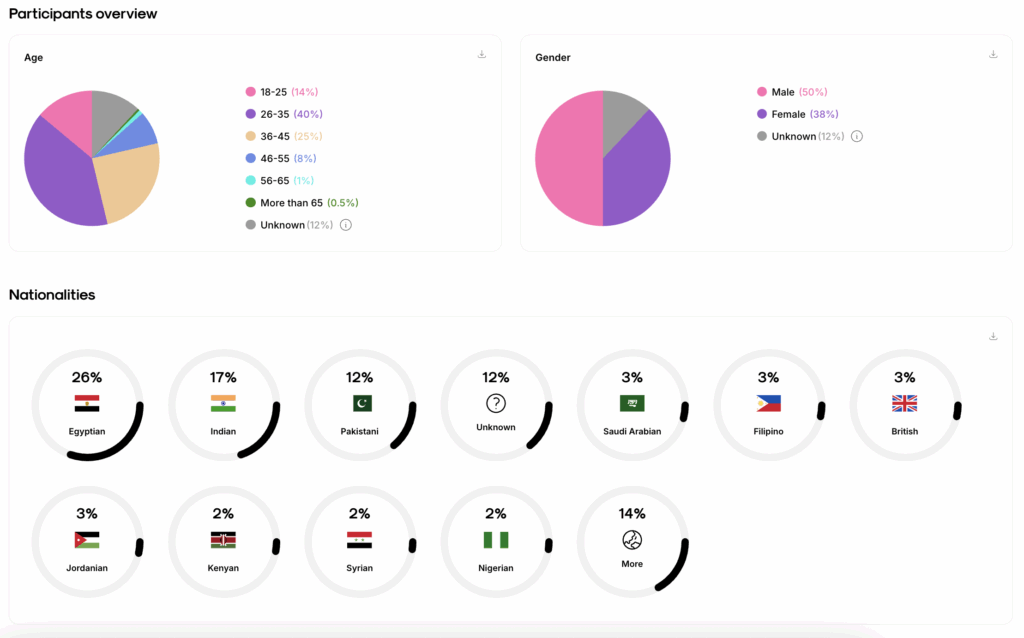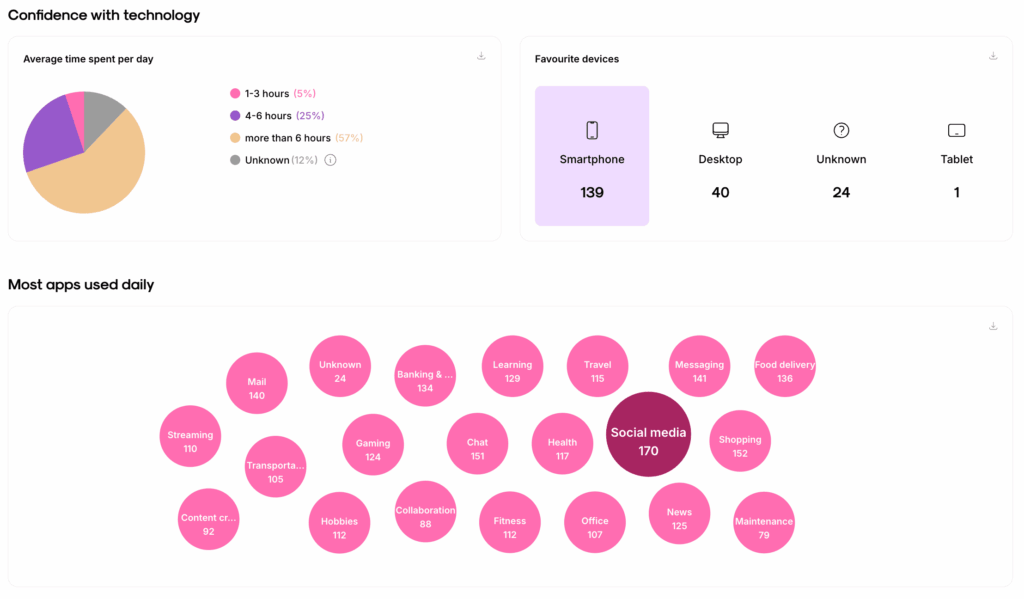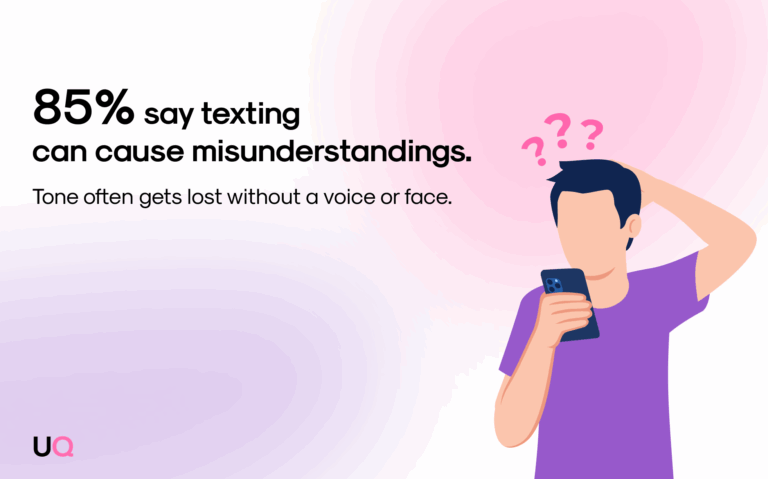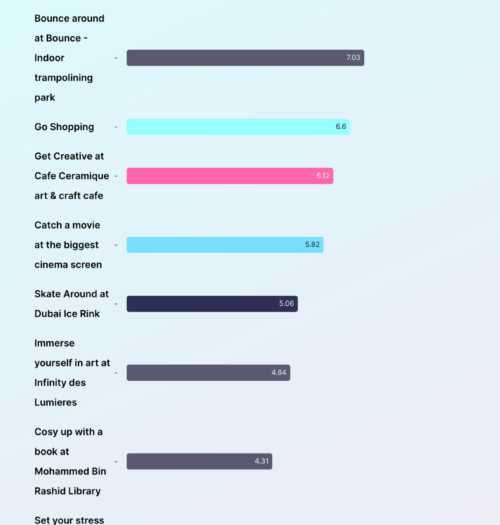🎁 Free 30-day publishing fees on Pay-As-You-GO. Get 15% off when recruiting from the UserQ Panel, with code HELLO15
Human insights, Survey results, Trends
Communication habits in the Middle East: Insights from a 2025 survey

Our communication habits shape the way we build relationships, work, and navigate daily life. In today’s digital-first world, these habits are changing rapidly. What used to be a quick phone call is now more often a WhatsApp message, complete with emojis and GIFs. These shifts are not just about convenience, they reflect deeper behavioral and emotional preferences.
So what do communication habits look like in the Middle East in 2025? Are in-person conversations still relevant? Do people find texting more comfortable than calling?
To explore these questions, we conducted a regional survey using UserQ to understand how professionals across the Middle East communicate today. This report highlights key insights into modern communication habits, preferred tools, emotional connection, and the reasons behind these choices.
About the communication habits survey
We launched a survey on UserQ targeting 200+ working professionals in the MENA region. It included a mix of multiple-choice, Likert scale, and open-text questions.
The goal was to uncover how communication habits vary by relationship type, device usage, personality, and cultural context and how these habits shape emotional expression and connection.
Survey demographics: who took part
To understand communication habits in a meaningful way, it was essential to gather insights from a diverse and regionally representative group. Here’s a closer look at the professionals who participated in our survey:

Gender: 57% identified as male and 43% as female
Age: The largest age group was 30 to 40 years (45.5%), followed by 20 to 30 years (27.5%)
Top nationalities: Egyptian (28%), Indian (19.6%), and Pakistani (12.5%)
Location: 42% of respondents currently live in the United Arab Emirates
Marital status: 65% are married
Personality: 45% described themselves as outgoing, while 36% said they are somewhat social
Education level: 69% hold a bachelor’s degree and 15% have completed a master’s degree
Income range: Most participants reported a household income between $500 and $5,000 per month
This diverse mix helps paint a rich picture of the digital communication habits across the Middle East, especially among working professionals.
Device and app usage: the foundation of communication habits
The devices we use and the apps we rely on shape how, when, and with whom we communicate. In a region where mobile connectivity is high and digital lifestyles are the norm, understanding these usage patterns is key to decoding communication habits. From screen time to app preferences, our survey reveals just how central smartphones and messaging platforms have become in everyday interactions.

Time spent online
- 67% spend more than 6 hours online daily
- 27% spend between 4 and 6 hours
Preferred devices
- 77% favor smartphones
- 21% prefer desktops
These choices influence communication habits significantly, with mobile platforms leading the way.
Most used app categories
Based on responses from 200+ participants:
- Social media apps – 95%
Most used for staying in touch with friends and family - Messaging apps – 84%
A go-to for daily conversations, both personal and professional - Shopping apps – 81%
Frequently used for browsing, buying, and deal-hunting - Email – 78%
Still essential for work and formal communication - Food delivery apps – 74%
Popular for convenience and quick access to meals - Learning platforms – 73%
Reflects a growing interest in upskilling and self-improvement
Together, these numbers show that mobile apps play a central role in daily life, with communication habits woven into nearly every type of digital activity, from chatting and emailing to learning and shopping.
Communication habits by relationship type
Our survey reveals that communication habits vary noticeably depending on the relationship.
People stay in closest and most frequent contact with their spouse, children, and friends.
Around 70% communicate always or often with their partner, and a similar number do so with their children. Friends also rank high, with most respondents reporting regular interaction.
When it comes to colleagues, communication is slightly less frequent.
About two-thirds connect with coworkers always or often, while others report only occasional contact. Neighbors stand out as the least frequently contacted group. Less than half said they speak with neighbors often, and many marked their interaction as rare or not applicable.
In terms of channels, WhatsApp is the most preferred across all relationship types, followed closely by in-person conversations and phone calls. For example, over 160 respondents use WhatsApp to talk with their spouse, and nearly the same number also connect in person or by phone. With friends and family, the pattern is similar, digital tools are dominant, but face-to-face and voice interactions still matter.
This mix of platforms and frequencies shows how emotional closeness shapes communication habits. People prioritize real-time, consistent communication with those they care about most, while work and community interactions happen more selectively and often digitally.
Texting versus calling: shifting communication habits
Texting for Convenience
- 65% prefer texting always or often
Reasons include:
- Flexibility
- Less emotional pressure
- Ideal for quick or emotional conversations
- Use of emojis and GIFs for expression
These findings show how texting fits into evolving communication habits, particularly when convenience and emotional control matter.
Calling for Emotional Depth
- 90% agree that phone or video calls foster stronger emotional connection
Preferred in:
- Long-distance relationships
- Serious or urgent conversations
- Moments when voice tone adds meaning
While communication habits have shifted toward texting, calls remain valuable in maintaining deeper relationships.
Emojis, visual cues, and digital expression
- 84% use emojis or GIFs to express emotions
- These tools are an essential part of modern communication habits
- They enhance digital interactions where tone or body language is absent
Miscommunication in text-based channels

Common issues:
- Lack of tone or facial cues
- Misinterpretation based on the reader’s mood
- Delayed or brief responses causing confusion
This reinforces the need to balance communication habits between text and voice when clarity is essential.
What we learnt and how you can learn more
People prioritize communication with those closest to them. Spouses, children, and close friends are contacted most frequently, reflecting the importance of emotional connection in daily communication habits.
WhatsApp is the most commonly used channel across all relationship types, followed by in-person conversations and phone calls. Messaging has become the norm, but face-to-face and voice communication still matter, especially in personal relationships.
Colleagues are part of regular communication, but less so than close family or friends. Neighborly interactions are the least frequent, showing a shift toward more selective, purpose-driven communication.
Communication habits are shaped by emotional closeness and context. The stronger the bond, the more personal and consistent the communication, with digital tools adapting to different needs.
This survey gives us a closer look at how people in the Middle East are staying connected in 2025, balancing digital convenience with the need for real, meaningful interaction.
If you’re looking to understand how your audience communicates, we can help. With UserQ, you can run custom surveys tailored to the MENA region and gather valuable insights into communication habits, preferences, and behaviors.
Register on UserQ to create and launch your own survey today.
Related Post

It’s raining in Dubai: Here
It’s raining in Dubai and we asked residents to rate their top inactivities (thanks to TimeOut Dubai) in order of

UserQ research: will a universal
The four-day working week has been a talking point here in the UAE for quite some time now. In fact,

The benefits of user research
User research is typically a key part of product development and business growth all around the world, but here at
Subscribe to our
product newsletter!
Receive emails about UserQ updates, new features,
offers and latest trends.


